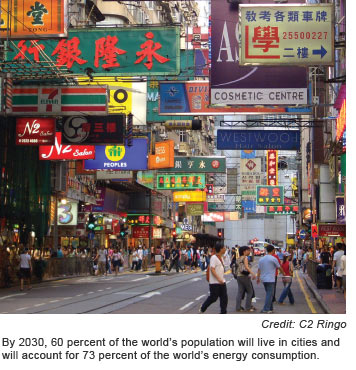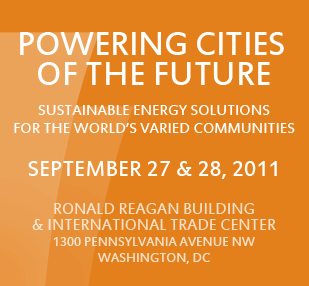By S. Vijay Iyer
  een from outer space, America’s cities form a network of exceptionally bright veins of light on the global landscape. It is evidence of America’s industrial and innovative achievements, its breathtaking progress and—the current economic crisis notwithstanding— its wealth. een from outer space, America’s cities form a network of exceptionally bright veins of light on the global landscape. It is evidence of America’s industrial and innovative achievements, its breathtaking progress and—the current economic crisis notwithstanding— its wealth.
But shifting on this map from the U.S. to Africa, we see only the dim outline of a continent. In sub-Saharan Africa in particular, home to 840 million people, more than two-thirds—580 million— have no electricity.
The 48 countries of Sub- Saharan Africa have a generation capacity of 68 gigawatts, about the same as California. If we exclude South Africa, the total falls to 28 GW, equivalent to the installed capacity of North Carolina.
Energy poverty like this cripples development prospects. Where people don’t have access to modern energy services, like reliable electricity, their ability to earn a livelihood or even live a healthy life is sabotaged.
One World Bank study of impacts of a month-long blackout in Zanzibar found that incomes fell, and average birth-weight of babies born in local hospitals dropped during that period.
Without immediate action on multiple fronts, the number of people in sub-Saharan Africa without access to modern energy services will grow by almost 70 million by 2030.
Even as Africa’s energy poverty is set to actually increase under business-as-usual scenarios, the booming growth of cities in Asia, Latin America and some African countries poses a parallel challenge.
By 2030, 60 percent of the world’s population will live in cities. They will account for 73 percent of the world’s energy consumption, and 76 percent of the world’s greenhouse gas emissions.
Fully 81 percent of increased demand for urban energy will be from cities in developing countries, which are expected to triple their built-up area.
This expansion is driven by both population and economic growth, both of which result in more energy consumption.
Some of the globe’s areas of darkness are lighting up quickly. The question is how to make this sustainable.
The International Energy Agency has analyzed what is needed to achieve pledges in the Copenhagen Accord, and to remove fossil fuel subsidies as announced by the G20 in 2009.
It cites energy efficiency measures in cities that could reduce the level of their GHG emissions by 2.5 billion tons. That’s two-thirds of the total 3.8 billion tons of carbon emissions the IEA estimates would be abated if its recommended carbon-reducing measures are adopted worldwide.
Many American cities are becoming greener and smarter through expanded use of clean energy options. More than 900 US cities have signed on to global targets to reduce GHG emissions.
Meeting these targets will depend, in large measure, on enhanced energy efficiency. Reducing energy consumption can often be done more quickly, easily and cheaply than switching to alternative sources of energy—especially in the short-to-medium term. There is an energy security dimension to this as well: every barrel of oil not used is a barrel that doesn’t have to be imported.
In many fast-growing developing and transition countries— both the energy-poor ones and booming emerging markets—city leaders are looking to cut energy costs and carbon emissions at the same time.
Some developing countries tax imports of renewable energy and energy-efficiency technologies; reducing or eliminating such import taxes is another important step.
Innovators in fast-growing, middle-income countries such as Brazil and Peru, often propelled by government policies that promote efficient and clean energy, are developing their energy efficiency capacity, targeting their huge cities in particular.
Lima, for example, is replacing all of its thousands of incandescent traffic lights with long-lasting and energyefficient light emitting diode signals.
Portland, Oregon, did the same thing 10 years ago, and cut energy usage by traffic lights by 80 percent and carbon emissions by almost 3,000 tons a year.
The C40 Cities Climate Leadership Group (C40), an organization of cities around the world—including 10 U.S. cities—working to address climate change, joined forces last June with the World Bank to adopt a consistent approach to city-led climate action plans and strategies.
By aligning municipal energy plans with consistent standards, city leaders help potential investors and grantors assess local projects in clean energy and energy efficiency, among others, thereby increasing the likelihood of financing.
The two groups have also agreed to pursue a common approach to measuring and reporting on city GHG emissions to allow verifiable and consistent monitoring of emissions reductions, identify actions that result in the greatest emission reductions, and facilitate access to carbon finance.
Clean energy initiatives successfully undertaken by U.S. cities can provide solutions for fast-growing cities of the global South. They can also help bring sustainable light to brighten the planet’s enduring areas of darkness.
S. Vijay Iyer is Director of the World Bank’s Sustainable Energy Department.
|


